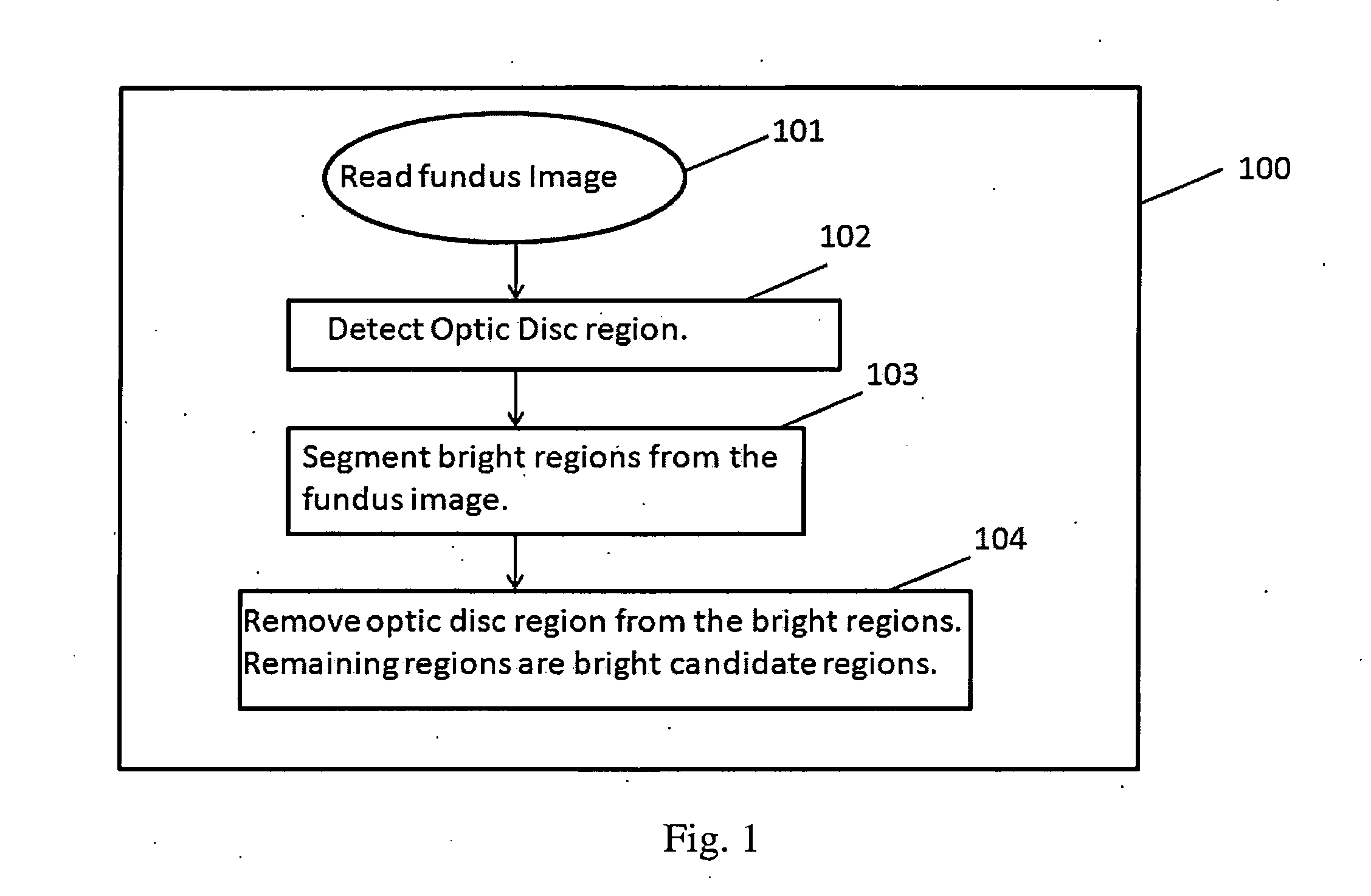Method and apparatus to detect lesions of diabetic retinopathy in fundus images
a technology of diabetic retinopathy and fundus, which is applied in the field of method and apparatus to detect lesions of diabetic retinopathy in fundus images, can solve the problems of insufficient referral, economic hindrance, and insufficient access to proper eye care, and achieves the effects of reducing time complexity, reducing run-time complexity, and fast dr detection system
- Summary
- Abstract
- Description
- Claims
- Application Information
AI Technical Summary
Benefits of technology
Problems solved by technology
Method used
Image
Examples
examples
[0043]The three stages of the proposed invention are illustrated with an example in FIG. 7, FIG. 8, FIG. 9 and FIG. 10. The first stage involving extraction of bright and red candidate regions is shown in FIG. 7 and FIG. 8, respectively. FIG. 7A shows the fundus image received. FIG. 7B shows the outcome of the automated OD region detection algorithm superimposed on the original image. Next, the OD region is removed from the bright regions detected from the image, and the remaining bright candidate regions (RBR) superimposed on the green plane of the fundus image are shown in FIG. 7C. The pixels marked in white in FIG. 7C represent the bright candidate regions.
[0044]FIG. 8A shows the same fundus image as in FIG. 7A. FIG. 8B shows the blood vessel regions detected and FIG. 8C shows the red candidate regions (RRR) after removing the blood vessel regions from the red regions.
[0045]The second stage of the proposed invention involving classification of the bright and red candidate regions...
PUM
 Login to View More
Login to View More Abstract
Description
Claims
Application Information
 Login to View More
Login to View More - R&D
- Intellectual Property
- Life Sciences
- Materials
- Tech Scout
- Unparalleled Data Quality
- Higher Quality Content
- 60% Fewer Hallucinations
Browse by: Latest US Patents, China's latest patents, Technical Efficacy Thesaurus, Application Domain, Technology Topic, Popular Technical Reports.
© 2025 PatSnap. All rights reserved.Legal|Privacy policy|Modern Slavery Act Transparency Statement|Sitemap|About US| Contact US: help@patsnap.com



